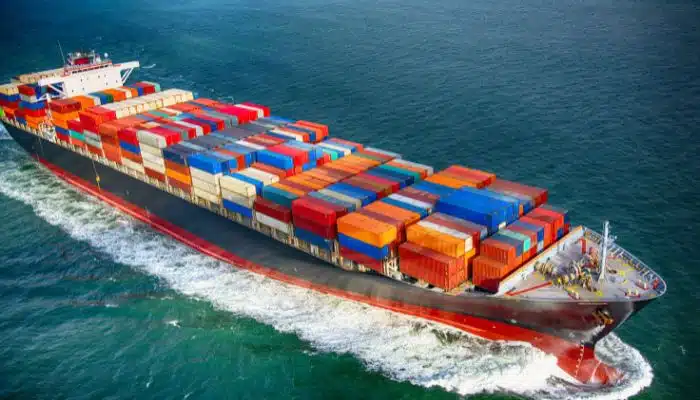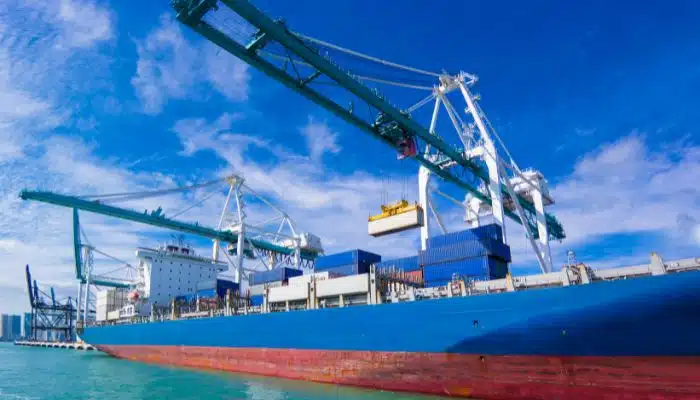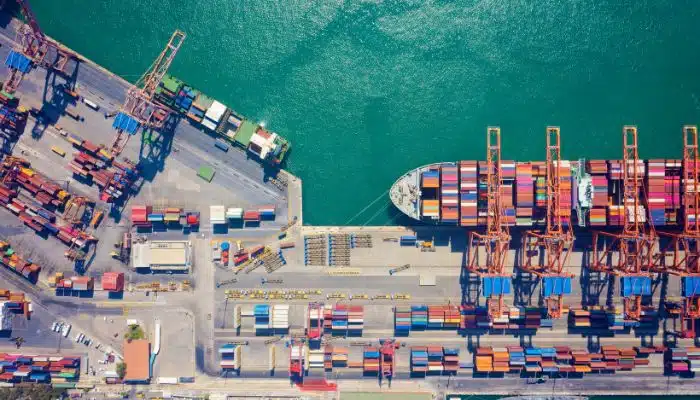Is it a direct shipment? A question commonly asked when shipping goods overseas. Direct shipment is the opposite of trans-shipment. These two terms are used in all modes of transport, be it land, sea, or air.
Direct Shipments

When goods are to be transported from location A to Z, and they are loaded onboard a ship that sails directly from port A to port Z, where port A is the port of first loading, and port Z is the final destination of the cargo, it is called direct shipment.
The ship may sail directly from Ports A to Z without stopping at any other port or calling in at certain other ports on the way to take in or discharge other cargo.
Trans-shipments
When goods have to be offloaded at an intermediate port and loaded onto a different ship to make its onward journey to its final destination, it is called trans-shipment. The port or ports where it is offloaded to take the connecting vessel is called the trans-shipment port. The connecting ship may be scheduled to sail after a day or more, during which the goods will have to stay on shore.

In the above example, if the goods are transported from port A to Port E, offloaded, and then loaded onboard another ship to sail from port E to Port Z, that is trans-shipment. Port E is the trans-shipment port.
Trans-shipment may involve one or more ports between the port of origin and the final discharge.
Why trans-ship cargo and not go for direct shipment?
Direct connections may not be available between two ports. For example, there are no direct sailings to most Australian ports from other continents. Cargo going to Australia from the US, Europe, Africa, the Middle East, and Asia normally trans-ship via ports in Singapore or Port Klang, Malaysia.
Another scenario is when container space is unavailable to ship the cargo directly. Though direct shipments typically reach destinations faster, businesses may trans-ship their cargo to beat delivery deadlines. Let us see how this works through an example.
The Electran company in Kolkata, India, gets an order for 200 electric motors to be shipped to Lena & Co., Cairo, Egypt, by sea, to be delivered in 18 days. Direct sailing from Kolkata Port to Ain Sokhna in Egypt takes 24 days, with the ship calling in at Jurong port, Singapore, en route. However, another option available to Electran company is to trans-ship the container via Cochin, from where it will catch a direct onward sailing to Ain Sokhna. In the second case, it takes only 17 days to reach Egypt.
| Direct/Trans-shipment | Route | Total No. of days taken |
| Direct shipment
Kolkata Port, India to Ain Sokhna Terminal, Egypt |
Kolkata Port, India | Jurong Port, Singapore | Ain Sokhna Terminal, Egypt |
24 days |
| Trans-shipment via Cochin, India
Kolkata to Cochin = 4 days Cochin to Ain Sokhna = 13 days |
Kolkata Port, India | Cochin Port, India | Ain Sokhna Terminal, Egypt |
17 days |
In this example, the direct shipment takes longer to reach its destination because of the number of ports of call en route, the total distance to the destination, etc. Whereas while trans-shipping the cargo, a quick connection after offloading the container at Cochin port gets it across to Ain Sokhna faster.
Advantages of Trans-shipping Cargo
Trans-shipments are usually more economical when compared with direct shipments. This is because the demand for moving cargo as direct shipments is higher and costlier. The shorter lead time for direct shipments and fewer times the goods are handled are two main reasons for the increased cost of direct shipments.
Port charges may sometimes be less at smaller trans-shipment ports resulting in cost savings. In some cases, it may be faster to trans-ship cargo, as direct shipments take a longer route while covering major ports.

Trans-shipment ports and the availability of connecting feeder services from these ports offer businesses a great deal of flexibility in shipping their cargo. Large cargo carriers cannot berth in small ports, and in such cases, trans-shipment may be the only option to transport cargo to such places.
However, a trans-shipment may be prone to delay as cargo has to be offloaded, kept in temporary storage, and loaded on board another vessel to continue its journey to its final destination. Delays due to port congestion, other issues, or inclement weather can result in missed connections and longer lead time. The chances of cargo damage are higher in the case of multiple handling.
Top Trans-shipment Ports of the World
The Port of Singapore
It is the largest trans-shipment port in the world. It serves as the main connection between Australia and the rest of the world. An estimated 20% of global sea cargo is trans-shipped through the port of Singapore.
The Port of Shanghai
With the largest automated container terminal, it handles an estimated 21 million TEUs annually in trans-shipments alone.
The Port of Busan
It is the third largest trans-shipment port in the world. Annual trans-shipment volumes last year were more than 12 million TEUs.
Large shipping lines like the MSC, AP Moller-Maersk, CMA CGM, etc., connect to almost every port in the world. They have designated trans-shipment hubs or ports that serve as trans-shipment connection points.
The port of Salalah, Oman, is the trans-shipment hub to the Middle East for Maersk Lines. The Mundra Port in India, in association with the Mediterranean Shipping Company (MSC), completed a major expansion and development phase to play the role of a crucial trans-shipment hub for shipments to the Middle East, South Asia, and India.
Upcoming Strategic Trans-shipment Ports in India
India is focusing on developing its trans-shipment ports in a big way to meet the increasing container traffic. Currently, 75% of the country’s trans-shipment cargo is handled by ports in Colombo, Singapore, Malaysia, and Dubai.
An International Container Trans-shipment Port (ICTP) is coming up at the strategically located Galathea Bay in the Nicobar Islands in the Bay of Bengal. Once completed by 2028, the initial phase will have a container handling capacity of 4 million TEUs annually.
The first phase of the three-phased Vizhinjam International Trans-shipment Deepwater Multipurpose Seaport near Trivandrum, Kerala, is expected to be completed by September this year. This multipurpose seaport that is close to international shipping routes will mainly help in the shipment of break bulk cargo.
In groupage or transport of LCL, cargo trans-shipments are common where cargo is unloaded at a trans-shipment port and grouped with other cargo going to the same destination as a full container load. Trans-shipment ports are important to the cargo shipping industry as minor sea ports often do not have the infrastructure to handle large carriers or the volume of cargo.
Digitization and real-time communication and tracking facilities have made it much easier to handle trans-shipments these days.
Source: Marine Insight

